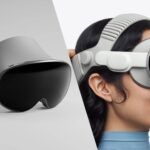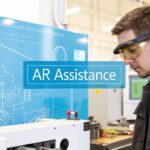Digital Twin vs Simulation: Key Differences and Practical Uses
The fundamental difference between a digital twin and a simulation comes down to one word: connectivity.
A digital twin is a living virtual model of a physical object or system, continuously updated with real-time data from its physical counterpart. A simulation, on the other hand, is a self-contained virtual environment used to test "what-if" scenarios, typically running on static or historical data to analyze a specific process or event.
Understanding Digital Twins and Simulations
At a glance, it's easy to see why people mix them up. Both are virtual models used to analyze systems, predict outcomes, and inform decisions. But their core purpose, data sources, and operational lifecycles are fundamentally different. Understanding this distinction is the first step to choosing the right tool for a specific business challenge.
A simulation is a powerful analytical sandbox. An organization builds a model to test a hypothesis in a controlled environment. A classic example is an engineering team running a simulation to verify the aerodynamics of a new aircraft wing. They input specific data, analyze its performance under various conditions, and once the analysis is complete, the simulation's task is done.
A digital twin is a dynamic, persistent replica of a specific physical asset that exists in the real world—a wind turbine, a factory floor, or an entire supply chain. Its defining feature is the constant, two-way data flow between the physical object and its virtual copy, enabled by IoT sensors. This live link ensures the digital model is an exact mirror of what's happening in the real world at that moment.
Core Distinctions at a Glance
The most important takeaway is how each relates to the physical world. A simulation runs on data you provide—often historical figures or theoretical assumptions—to answer a question. Once it provides an answer, its purpose is fulfilled. A digital twin, however, persists. It lives and evolves alongside its physical counterpart for its entire lifecycle.
Exploring a few digital twin examples makes it clear how they operate in real-world settings.
| Attribute | Simulation | Digital Twin |
|---|---|---|
| Data Source | Static, historical, or theoretical data inputs. | Real-time, continuous data from IoT sensors. |
| Connection | Disconnected from the physical asset. | Dynamically linked to the physical asset. |
| Lifecycle | Temporary; exists for a specific analysis. | Persistent; exists for the asset's entire lifecycle. |
| Primary Goal | To analyze and predict outcomes of "what-if" scenarios. | To monitor, optimize, and predict in real-time. |
A simple way to think about it: A simulation shows you what could happen under a set of assumptions. A digital twin shows you what is happening now and what will likely happen next based on live data.
This dynamic, data-rich nature is why the technology is gaining significant attention. The global digital twin market was recently valued between USD 17.73 billion and USD 24.97 billion, with forecasts projecting it to soar past USD 155 billion by 2030. That’s a compound annual growth rate (CAGR) of nearly 48%, which highlights its growing importance in modern industry.
Comparing the Core Attributes of Each Technology
To fully grasp the digital twin vs. simulation distinction, one must look beyond simple definitions and into their core attributes. The real difference isn't just what they are, but how they work, the type of data they consume, and the specific problems they solve. When broken down, they are two fundamentally different tools for distinct stages of a product's or system's life.
Breaking down these technologies is similar to understanding the core differences between tools like spreadsheets and databases—the right choice depends entirely on the job. A database offers dynamic data management where a spreadsheet provides static analysis; in the same way, a digital twin provides a live, evolving counterpart where a simulation offers a contained, analytical snapshot.
This infographic effectively summarizes the core difference between a one-off simulation and a live digital twin.
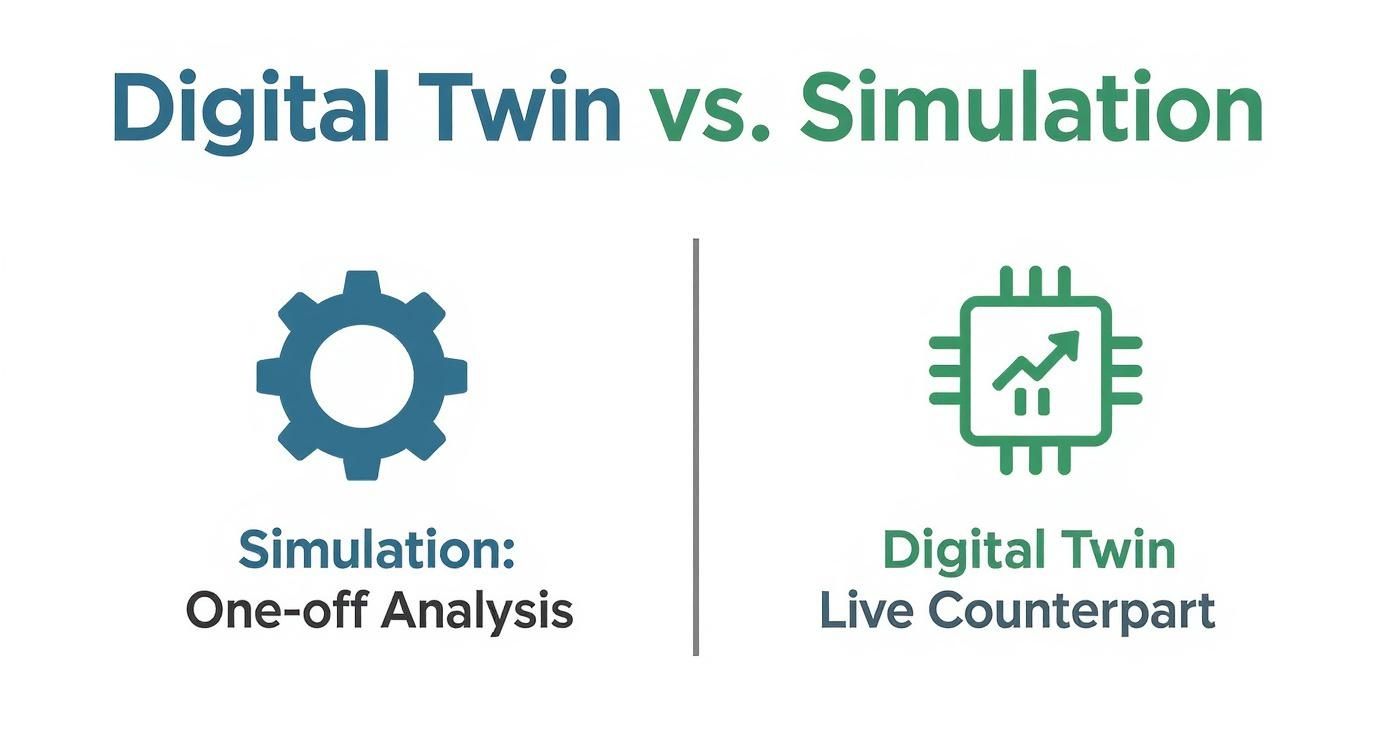
As you can see, the simulation is positioned as a tool for isolated "what-if" analysis, while the digital twin is a persistent, living connection to a real-world physical asset.
To make this even clearer, let's break down the key attributes side-by-side in a table.
Key Differences Between Digital Twin and Simulation
| Attribute | Simulation | Digital Twin |
|---|---|---|
| Data Source | Static, predetermined, or theoretical data. | Continuous, real-time data from IoT sensors. |
| Connection to Physical World | None. It's a completely virtual, isolated model. | Direct, bidirectional link to a specific physical asset. |
| Scope | Finite and narrow. Models a specific event or process. | Persistent and broad. Spans an asset's entire lifecycle. |
| Purpose | Design, analysis, and "what-if" validation. | Real-time monitoring, optimization, and prediction. |
| Core Question | "What if…?" | "What is happening now?" and "What will happen next?" |
| Application Stage | Primarily used in design and pre-production phases. | Used throughout the operational life of an asset. |
| Example | Simulating a new aircraft wing design under stress. | A live twin of a specific aircraft engine, #SN78910. |
This table lays out the fundamental distinctions, but let's dive a bit deeper into what these differences mean in practice.
The Nature of Data Inputs
The most significant divergence is the data each technology uses. A simulation runs on a set, static dataset. This data could be historical, entirely theoretical, or based on specific assumptions fed into it to model a "what-if" scenario.
Consider an automotive engineer simulating a car crash. They input data points for speed, angle of impact, and material strength. The simulation runs its course, produces a result based only on those inputs, and is then complete. It has no connection to a real crash happening on the road.
A digital twin, on the other hand, is defined by its live data feed. It constantly pulls in a stream of real-time data from its physical counterpart via IoT sensors and other sources. This creates a living, two-way flow of information, meaning the virtual model is always a mirror image of the physical object's current state—right down to its operating conditions and environment.
Scope and Lifecycle Application
Another critical distinction is their scope. A simulation is typically narrow and has a clear endpoint. It's focused on a specific event or process, designed to answer a single question like, "How will this new turbine blade hold up under extreme wind?" Once an answer is provided, the simulation has served its purpose. It is a tool for the design, analysis, and validation phases.
In contrast, a digital twin has a much wider view, often covering the entire lifecycle of an asset. It's a persistent model that exists from the day the asset is created, through its years of operation, and right up to its retirement. It’s not a one-time analysis; it’s a continuous operational partner for ongoing monitoring, optimization, and prediction.
The core difference in scope is this: A simulation models a process or event, while a digital twin represents a specific, unique physical asset. You can simulate a type of engine, but you create a digital twin of engine serial number #734.
Primary Purpose and Strategic Goal
Finally, what are they for? A simulation’s main purpose is analysis and design exploration. It allows engineers and planners to test hypotheses and observe potential outcomes in a safe, virtual sandbox before committing resources in the real world. It’s all about answering, "What if?"
A digital twin's strategic goal is real-time operational optimization. By mirroring a physical system live, it allows operators to monitor performance, predict failures before they happen, and test operational adjustments virtually before applying them. It answers, "What's happening now?" and "What will happen next?" This capability is one of the most powerful new technologies in manufacturing for improving uptime and efficiency.
Here’s a simple example with a new bridge:
- Simulation: Before construction begins, engineers would simulate traffic loads, wind forces, and material stress to validate the bridge's design.
- Digital Twin: Once the bridge is built, it gets a digital twin. This twin is fed real-time data from sensors monitoring structural integrity, traffic flow, and weather, enabling predictive maintenance for its entire lifespan.
How Digital Twins and Simulations Work Together
Digital twins and simulations are not competing technologies; they form a powerful partnership, each enhancing the other. Think of it this way: simulations are the dress rehearsal, and the digital twin is the live, continuously updated performance.
Simulations often create the predictive algorithms and stress-tested models that serve as the twin's starting point. This means that before a digital twin even goes live, its core logic has already been validated in a virtual environment.
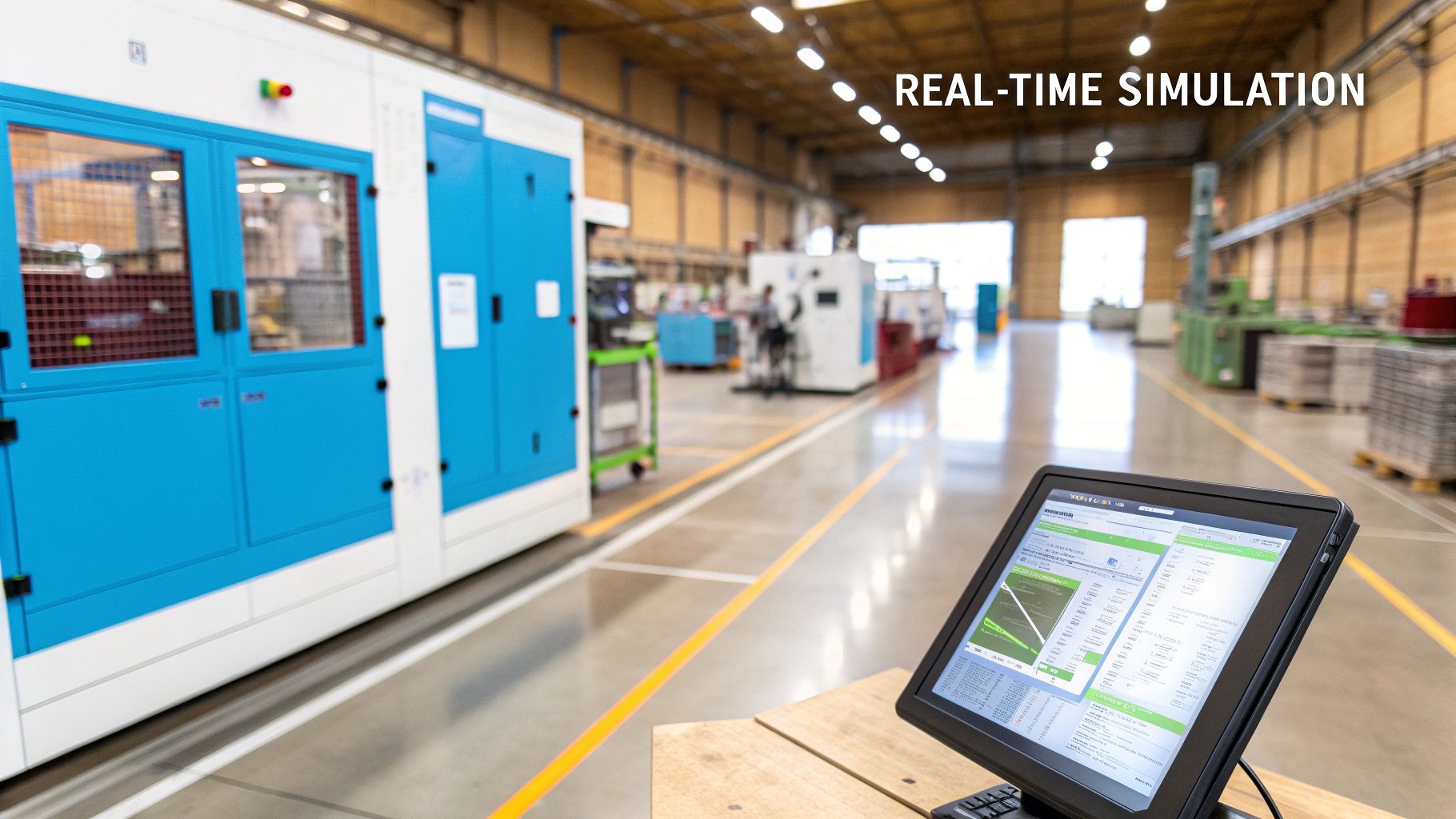
Building the Predictive Foundation
Simulations typically run on theoretical or historical data sets. Engineers use them to run controlled "what-if" scenarios, exploring everything from stress tests and fluid dynamics to thermal cycles in a completely safe, sandboxed environment. This is where they uncover a system's potential behaviors and failure points long before any physical hardware is deployed.
The process typically involves a few key steps:
- Defining boundary conditions and material properties for the simulation.
- Running multiple scenarios to map out potential failure modes.
- Calibrating the simulation's outputs against data from lab tests or early prototypes.
For instance, an aerospace team might simulate airflow over a new wing design at hundreds of different speeds and angles. When that validated aerodynamic model becomes part of the aircraft's digital twin, it provides a reliable, pre-tested performance baseline from day one.
Making Simulations Dynamic with Real-Time Data
Once an asset is deployed, its digital twin begins to pull in a constant stream of data from IoT sensors. This live feed continuously refines and recalibrates the underlying simulation models, making them a true reflection of current operating conditions.
“Combining real-time sensor inputs with simulation engines achieves up to 30% more precise predictions in maintenance scheduling.”
This dynamic relationship transforms how both tools are used.
| Phase | Simulation's Traditional Role | Twin-Enhanced Role |
|---|---|---|
| Initial Analysis | Static, one-off scenario testing. | An embedded, pre-validated model. |
| Operational Use | Scheduled reruns based on fixed intervals. | Continuous adjustments based on live data. |
| Optimization | General design recommendations. | Actionable, context-specific insights. |
By feeding real-world data back into the simulation on the fly, teams can virtually test process adjustments before implementing them on the plant floor, drastically reducing risk and accelerating decision-making.
A Game-Changer for Proactive Maintenance
Predictive maintenance is one of the most powerful use cases for this partnership. Imagine a digital twin of a factory production line. It uses its embedded simulation model, fueled by live vibration, temperature, and load data from the real machines, to constantly simulate wear and tear.
When the system predicts a critical bearing is likely to fail within the next 48 hours, it automatically alerts the maintenance team. To learn more about these workflows, you can check out our in-depth guide on condition monitoring and predictive maintenance.
This synergy is also driving significant gains in process optimization. Teams can run back-to-back simulations to compare different production scenarios, all based on the current state of the factory floor. This approach has delivered up to 20% efficiency improvements in environments like automotive assembly lines and packaging plants.
Integrating AR/VR for Deeper Insights
Adding Augmented and Virtual Reality (AR/VR) into the mix elevates this synergy. VR environments can host highly detailed equipment models, allowing engineers to step "inside" the simulation to manipulate variables and observe outcomes.
Meanwhile, AR brings the simulation's insights directly to on-site teams. A technician wearing AR glasses can see data overlays and alerts directly on the physical machine, along with step-by-step repair guides generated by the digital twin. This immersive approach is proven to reduce downtime and human error.
Practical benefits of integrating AR/VR include:
- Immersive Training: Enables interactive training in a safe, virtual replica of the actual work environment, powered by real-time data from the digital twin.
- Remote Expert Assistance: Allows specialists to see what the on-site technician sees and guide them through a complex procedure using AR overlays.
- Enhanced Collaboration: Facilitates real-time collaboration between design engineers and operations teams, all visualizing the same data in a shared context.
By weaving AR and VR into this workflow, organizations create a unified view that connects predictive models with live assets, closing the feedback loop and empowering teams to make better, faster decisions.
Choosing the Right Tool for Your Industry
Selecting between a digital twin and a simulation comes down to specific industry challenges and strategic goals. Each one offers a different capability—one is for designing and testing what could be, while the other is for monitoring and perfecting what already is. The right choice drives real business outcomes, from reducing R&D costs to eliminating unplanned downtime.
If you work in a design-heavy field, simulation is a cornerstone technology. It’s the ultimate sandbox for exploration and validation, letting engineers run endless "what-if" scenarios in a risk-free virtual space before any capital is spent on physical prototypes.
When Simulation Is the Right Choice
Simulations are built to answer specific, targeted questions during the design, planning, and analysis stages. Their primary value lies in modeling complex systems from theoretical or historical data to predict how a new design or process might behave under specific conditions.
Consider these real-world contexts:
- Aerospace: Engineers use simulations to conduct aerodynamic tests on a new wing design, optimizing for lift and drag long before building a physical model. This single step can drastically reduce the need for expensive wind tunnel testing.
- Financial Services: Risk management teams run complex Monte Carlo simulations to model how market volatility could impact investment portfolios, helping them build more resilient financial strategies.
- Supply Chain Logistics: A company planning a new distribution center can simulate different layouts and workflows to identify the most efficient way to manage inventory and fulfill orders.
In each case, the simulation provides a crucial, one-off analysis to support a major decision. It is the ideal tool for front-end planning and validation.
Where Digital Twins Deliver Continuous Value
Digital twins, on the other hand, are the go-to for managing and optimizing assets that are already in operation. By creating a live, dynamic connection to a physical system, a digital twin offers continuous insight and predictive power over an asset's entire life. This always-on link drives significant operational improvements.
Digital twins go far beyond static models. They are living digital counterparts that unlock significant operational gains. Real-world studies show that digital twin projects can boost productivity by up to 30-60%, cut material waste by 20%, and reduce production quality problems by 25%.
That level of impact is why they have become essential in operational environments.
For instance, a digital twin combined with AI can simulate precise customer behaviors and preferences, which has been shown to drive a 3-5% increase in sales thanks to better product features and improved customer satisfaction.
Let's look at some powerful use cases:
- Manufacturing: A digital twin of a factory floor uses real-time sensor data to send out predictive maintenance alerts, virtually eliminating unplanned downtime.
- Smart Buildings: Facility managers use digital twins to optimize energy consumption, adjusting HVAC and lighting in real time based on occupancy data. The cost savings are immediate and significant.
- Healthcare: A digital twin of a patient, fed by data from wearable sensors, can monitor vital signs remotely. This allows clinicians to create personalized treatment plans and intervene proactively.
Enhancing Operations with AR and VR
The practical value of these technologies is amplified by Augmented and Virtual Reality. These immersive tools bridge the gap between digital models and the physical world, making complex data intuitive and actionable for personnel on the ground.
With a digital twin, a technician wearing an AR headset can view real-time performance data and step-by-step repair guides overlaid directly onto a machine. This reduces human error and has been shown to halve service times.
Similarly, VR can create hyper-realistic training simulations powered by digital twin data. Trainees can practice complex procedures in a safe, virtual environment that perfectly mirrors real-world conditions. This accelerates learning and improves skills without putting expensive equipment at risk.
Getting Down to the Tech: How to Build a Simulation vs. a Digital Twin
Let's move from the "what" to the "how." Building a simulation or a digital twin involves different methodologies, tools, and budgets. It's not just about picking the right use case; it's about understanding the commitment. Are you launching a focused, one-off project, or are you building a living operational asset that will grow with your business?
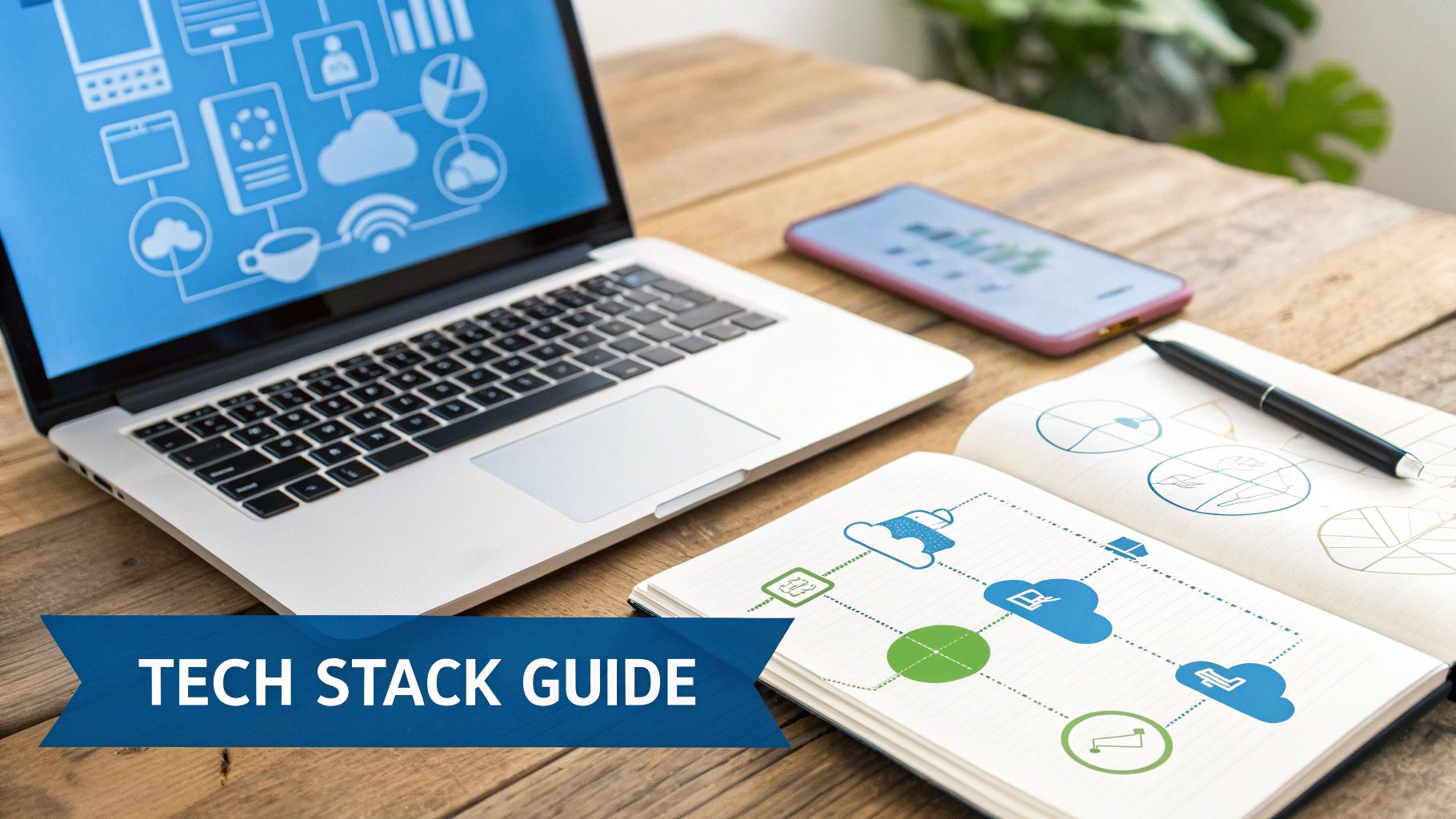
The Simulation Technology Stack
Developing a simulation is typically a project-based effort. You have a specific question and bring in specialized software and deep domain expertise to answer it. The core of any simulation is a powerful modeling platform that can translate complex physical phenomena into mathematical models.
The tech stack is focused and self-contained:
- Modeling Software: This is where the core work happens. Tools like ANSYS, MATLAB, or Simulink are industry standards, providing the framework to build sophisticated models based on physics, finance, or chemistry.
- Computational Resources: These models are computationally intensive. Complex scenarios often demand high-performance computing (HPC) clusters to process the calculations in a reasonable timeframe.
- Expertise: This is non-negotiable. Success depends on having engineers or analysts who are masters of both the software and the specific field being modeled, whether that’s fluid dynamics or market volatility.
This approach is incredibly powerful for design and analysis, but it’s designed to be self-contained. The investment is tied to a specific project to get answers to "what-if" questions.
The Digital Twin Ecosystem
Building a digital twin is a much larger undertaking. It's not about buying a single piece of software; it's about architecting an entire ecosystem of interconnected technologies. You are creating a persistent, real-time link to a physical asset, which requires a different level of commitment.
Here’s the main takeaway: a simulation is a tool you use, but a digital twin is an operational system you build and maintain. This shift from a project to a platform is a serious long-term investment.
The tech stack for a digital twin is a multi-layered system:
- IoT Sensor Platforms: It all starts with data. You need a network of sensors on your physical asset, constantly streaming real-time information.
- Data Pipelines and Cloud Infrastructure: All that sensor data must be managed. A robust infrastructure is needed to ingest, process, and store a massive, continuous flow of information.
- AI and Machine Learning Engines: This is the brain. These algorithms analyze incoming data, identify patterns, and run predictive models to forecast future events.
- Visualization and Interaction Layers: Insights are only valuable if they can be understood and acted upon. AR and VR solutions are key to making the twin’s data accessible, letting users interact with the virtual model or overlay data onto the physical world for maintenance and training.
When embarking on complex projects like these, getting the foundation right is everything. A disciplined approach, like the one outlined in this guide to the software development discovery phase, is critical for defining the problem and setting clear boundaries before development begins.
How AI Changes the Game
Artificial intelligence acts as a major catalyst for both technologies, but it plays different roles. For simulations, AI can help optimize models and produce results faster. For digital twins, AI is the engine. It's what transforms a flood of raw data into predictive insights that allow for proactive maintenance and on-the-fly operational adjustments.
This synergy is fueling significant market growth. The AI-powered simulation and digital twin market is on track to grow from USD 3.7 billion to USD 81.3 billion over the next decade—a compound annual growth rate of 36.2%. On-premises deployments still hold over 60% of the market share, which indicates that large enterprises are prioritizing control and security as they adopt these powerful new technologies.
Common Questions, Clear Answers
When organizations begin exploring digital twins and simulations, a few practical questions consistently arise. Stakeholders want to move past definitions and understand when to use each tool and why. Getting these distinctions right is what separates a smart investment from a costly misstep.
Let's tackle the most common questions head-on. These conversations get to the heart of the digital twin vs. simulation debate, showing how these two powerful technologies are deeply connected yet serve very different purposes.
Can a Digital Twin Actually Work Without Simulation?
Not if you want it to deliver predictive insights. Without simulation models integrated into its core, a digital twin is essentially a sophisticated, live-streaming dashboard. It can show you what’s happening right now, which is useful, but it loses its power to predict what might happen next.
The simulation engine is the twin's analytical core. It’s what provides the capability to run "what-if" scenarios using the constant stream of live data. For example, a twin of a wind turbine isn't just monitoring wind speed; it's using its simulation core to ask, "What is the likely impact of this incoming storm on blade integrity?"
A digital twin without its simulation brain is a reactive tool, not a proactive one. It shows you what is happening, but it can't reliably tell you what will happen next.
That's why simulation is the analytical heart of any true digital twin. It is the component that transforms a flood of raw data into intelligent, forward-looking guidance.
So, When Should I Actually Choose a Digital Twin?
You should choose a digital twin when you need continuous, lifecycle-long insight into a specific physical asset—be it a machine, a production line, or an entire factory. You select a digital twin when your goal is to actively monitor, analyze, and optimize a live operational environment in real time. It's built for long-term value.
A simulation is more like a one-off project. You build it to answer a specific design question or to plan a new process, and then it is complete. A digital twin, on the other hand, becomes a permanent fixture in your operational toolkit. It lives, learns, and evolves alongside its physical counterpart, delivering value day in and day out.
It's time for a digital twin when you identify with these needs:
- Persistent Monitoring: You must track the health and performance of a critical asset 24/7.
- Predictive Maintenance: Your primary goal is to eliminate unplanned downtime by forecasting failures before they occur.
- Real-Time Optimization: You want to make small, dynamic adjustments to your processes based on live conditions to maximize efficiency.
If your focus is on managing an existing, active system, the digital twin is the right tool for the job.
Is a Digital Twin Always More Expensive Than a Simulation?
Looking at the initial price tag, yes, a digital twin is generally a larger investment upfront. That's because it requires an entire ecosystem for support: IoT sensors, robust data infrastructure, and AI/ML engines to make sense of the constant information flow. A simulation’s cost, by contrast, is usually tied to software licenses and expert time for a specific, contained project.
But analyzing cost this way overlooks the bigger picture. The return on investment (ROI) for each is completely different.
| Aspect | Simulation | Digital Twin |
|---|---|---|
| Cost Structure | Project-based (software, expert time). | Higher upfront infrastructure and setup costs. |
| ROI Timeline | Quick return, realized once the design or analysis is complete. | Long-term, accrued over the asset's entire lifecycle. |
| Value Proposition | Reduces R&D costs, validates designs before building. | Slashes operational costs, eliminates downtime, extends asset life. |
The cost of a digital twin isn't a one-time expense; it's a long-term operational investment. While the initial investment may be higher, its ROI is delivered through years of sustained improvements in efficiency, productivity, and asset health—often far surpassing the project-based savings of a simulation.
Ready to bridge the gap between your virtual models and real-world results? AIDAR Solutions specializes in AR and VR applications that bring digital insights to life, empowering your teams with immersive training and instant remote expert support. See how our solutions can cut service times in half and fundamentally improve your operational workflows.

